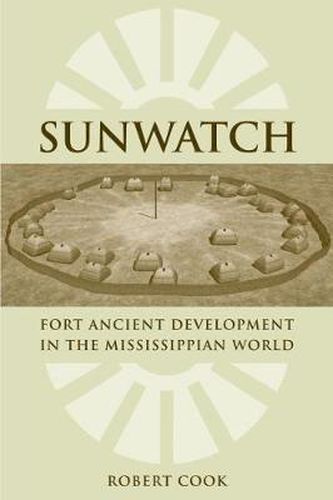Readings Newsletter
Become a Readings Member to make your shopping experience even easier.
Sign in or sign up for free!
You’re not far away from qualifying for FREE standard shipping within Australia
You’ve qualified for FREE standard shipping within Australia
The cart is loading…






This is a model for investigations of the Mississippian dimensions of Fort Ancient societies. The last prehistoric cultures to inhabit the Middle Ohio Valley (ca. A.D. 1000-1650) are referred to as Fort Ancient societies, which exhibited a wide variety of Mississippian period characteristics. What is less well known and little understood are the social processes by which Mississippian characteristics spread to Fort Ancient communities. Through a comprehensive study of Sun Watch, one of the few thoroughly excavated Fort Ancient settlements, the author focuses on the development of village social structure within a broad geographic and temporal framework, recognizing border areas as particularly dynamic contexts of social change. As a fundamental study of social patterning of Fort Ancient villages, this work reveals the interrelationships of small social units in culture change and social structure development and provides a full reconsideration of the Mississippian dimensions of Fort Ancient societies and a model for future investigations of larger patterning in the late prehistory of the region.
$9.00 standard shipping within Australia
FREE standard shipping within Australia for orders over $100.00
Express & International shipping calculated at checkout
This is a model for investigations of the Mississippian dimensions of Fort Ancient societies. The last prehistoric cultures to inhabit the Middle Ohio Valley (ca. A.D. 1000-1650) are referred to as Fort Ancient societies, which exhibited a wide variety of Mississippian period characteristics. What is less well known and little understood are the social processes by which Mississippian characteristics spread to Fort Ancient communities. Through a comprehensive study of Sun Watch, one of the few thoroughly excavated Fort Ancient settlements, the author focuses on the development of village social structure within a broad geographic and temporal framework, recognizing border areas as particularly dynamic contexts of social change. As a fundamental study of social patterning of Fort Ancient villages, this work reveals the interrelationships of small social units in culture change and social structure development and provides a full reconsideration of the Mississippian dimensions of Fort Ancient societies and a model for future investigations of larger patterning in the late prehistory of the region.